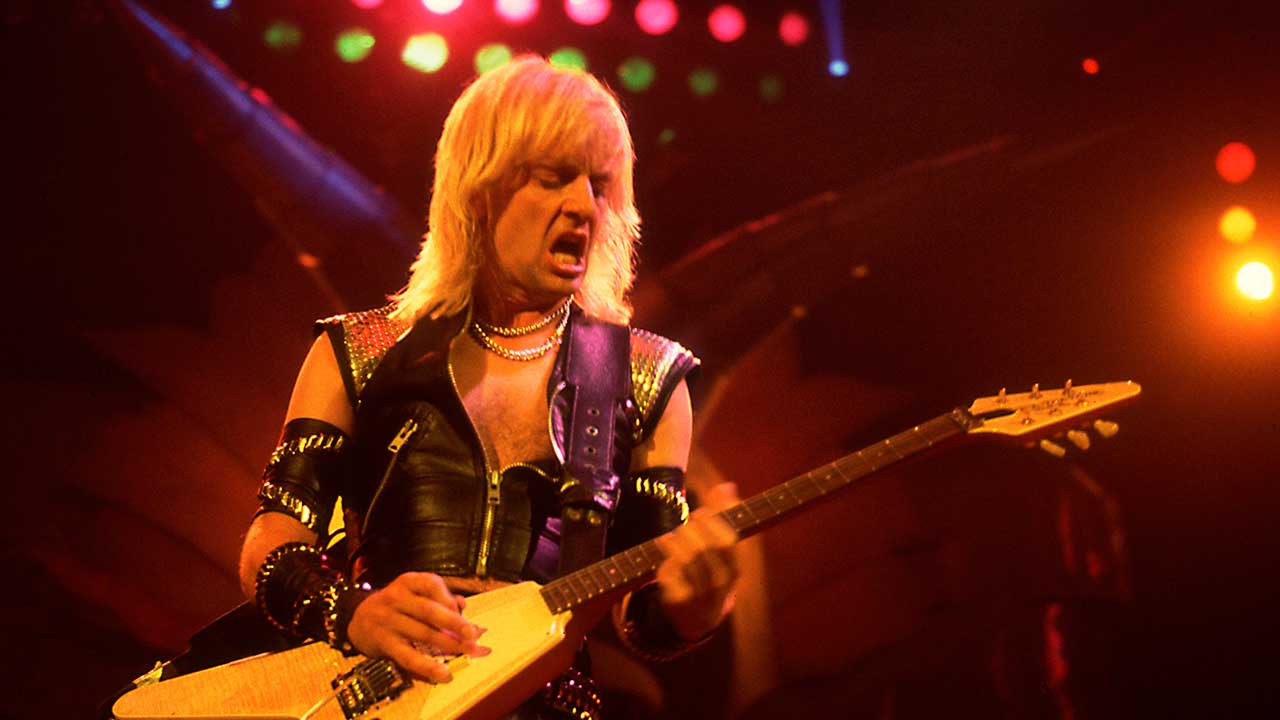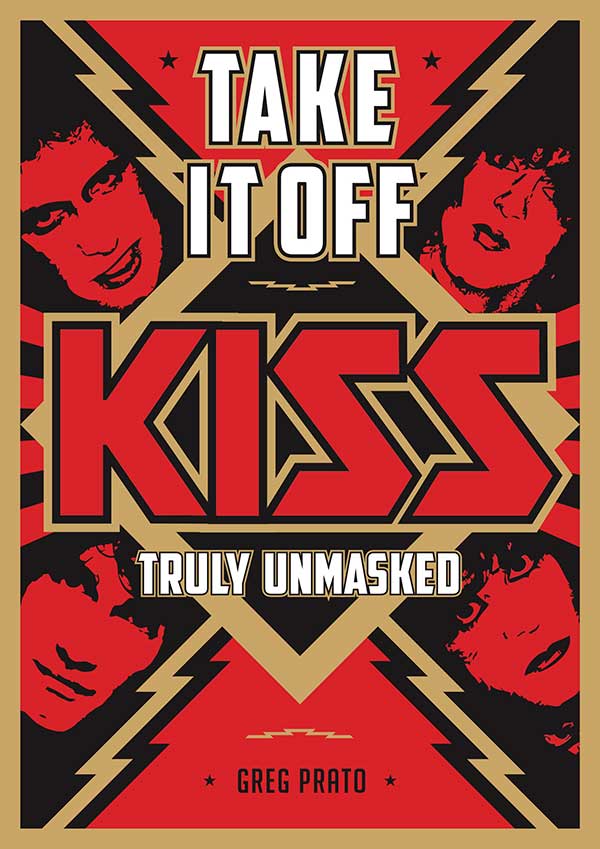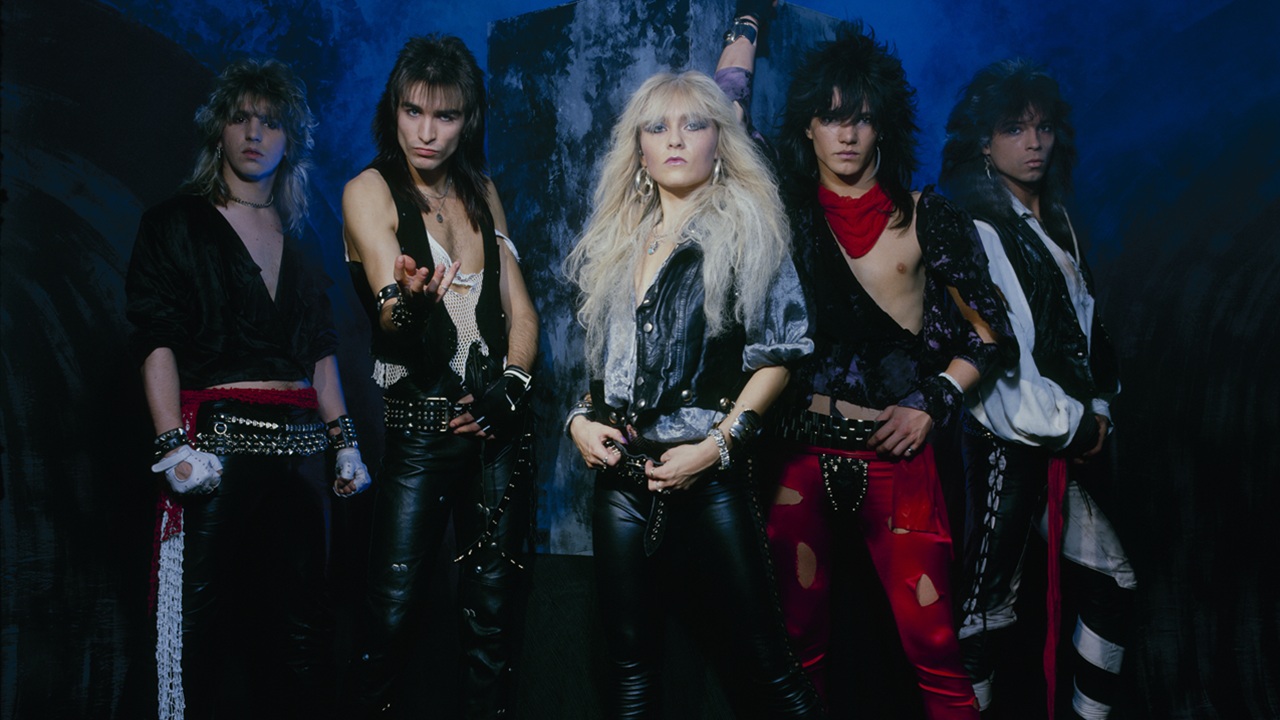K.K. Downing on the 1980s: when hair was big and metal softened its sound
Original Judas Priest guitarist K.K. Downing looks back on the short-lived period when veteran acts like Kiss, Ozzy and Priest modified their metal for the mainstream

Greg Prato's new book Take It Off - Kiss Truly Unmasked is out in November, and promises to lift the lid on the story of Kiss in the 1980s, a period when the band ditched the make-up, established themselves as an MTV mainstay, and wrote some of their biggest hits.
In this excerpt, former Judas Priest guitarist K.K. Downing looks back on an era when some of rock's most hard-hitting bands visited the hairdressers and softened their sound in pursuit of airtime, and how The Gulf War brought the good times to a resounding halt.
Greg Prato's Take It Off: Kiss Truly Unmasked is out next month. K.K. Downing plays a set of Judas Priest covers with Megadeth's David Ellefson at KK's Steelmill in Wolverhampton on November 3.

Why do you think so many veteran hard-rock and heavy-metal acts lightened their sound around the same time in the 80s?
You get to the late 70s, and you start to see a lot more arena bands and arena tours. We jumped on some – supporting Led Zeppelin, Alice Cooper, Foghat, Kiss. But I think it’s fair to say, by the time we see the 80s, we see MTV coming along, which broadened a massive spectrum. Radio stations got bigger and more powerful. Every car that was driving down the street had the radio pumping.
When we got to the mid-80s, there was such a feel-good factor. We would come over to America, and we would do 138 shows – in North America alone. We would go all the way around the country and Canada, have a break of two weeks, and then go all the way around again, playing the secondary markets. And even the secondary markets were notable places to be, for bands like us.
But what is very important is that bands were going to the people. People were not having to spend a fortune or having to travel overnight to see bands in major cities, so they could spend more money and see more bands at this time. It was harder to do that before, and it was certainly harder to do that afterward. Most bands stopped going into the secondary markets, because we were told they had become ‘non-lucrative’ areas.
Sign up below to get the latest from Classic Rock, plus exclusive special offers, direct to your inbox!
Which was sad. Because we would go to Boise, Idaho; we’d go to Little Rock, Arkansas; we would go to Biloxi, Mississippi, and play these towns – Midland-Odessa. I remember going to Midland-Odessa with Judas Priest, The Scorpions, and Def Leppard! That’s great for the people, and it’s great for the radio stations, and it’s great for the media who are not in Los Angeles, New York, Chicago, and St. Louis, for example. So it’s great all around.
I think we saw the most positive and productive period in music history in the mid-80s. And I think it’s fair to say they were the ‘big hair’ days. We would see bands – Scorpions, Judas Priest, Dokken – all go to the hairdressers. But it was all good, because the whole rock and metal genre became more colourful. These were just magical times. But did it become a fight for positions on MTV and radio stations Probably it did.
We played the US Festival [on May 29, 1983], and Ozzy Osbourne went on before us, Quiet Riot went on before us. And then, before we know it, Quiet Riot do an album, and they sell six million records [1983’s Metal Health]. Before we know it, Def Leppard come out of the box and sell six million records [1983’s Pyromania]. And Def Leppard’s follow-up album [1987’s Hysteria] sold over ten million records! And then you’ve got Van Halen [who also had a ten-million seller with 1984’s 1984].
So, suddenly, you start to see mixes of tours, where you could get any mixture of any bands. It’s a mix-and-match, but everything is good, and everything is in the genre. And I think, with Judas Priest, we probably started to think – consciously or subconsciously – that we haven’t had our day yet. All of those other bands have had their day with these big-selling records. Judas Priest seemed to be one of the biggest bands around at the time, but our biggest-selling record was, like, two million records [1982’s Screaming For Vengeance].
Not to be greedy, but we were thinking: Our support bands are having these massive-selling records. If you create the songs, you’ve got the media outlets with radio and television now. You can have these big records—you just have to put the songs together. Hence, probably, why Priest decided not to do a double album with the Turbo album, which was originally going to be called Twin Turbos. What we decided to do was condense everything down, and put out an album together that had good continuity, a good flow, but also was pretty much a radio-friendly album.
We attempted it once, and kind of failed, because it didn’t happen for us. The producers from Top Gun wanted a song from the album to put in the movie, and that didn’t happen – our fault. Otherwise, it could have been very, very different for the band. We had an opportunity – it just didn’t click for Judas Priest. They wanted the song Reckless.
That probably would have done it, because it would have been all over the radio, I suppose, if it was in the movie. We thought Turbo Lover and Locked In were going to do it for us, but they didn’t. The tour was very successful, the album was successful, but it wasn’t the big-selling album that we hoped for. I think quite a lot of that went on with the acceptability and success of a lot of other bands that you would look at on MTV. Even Ozzy went to the hairdressers!
So that was what was going on in the mid-80s. But it was a wonderful time. We would drive up to a show, and there would be at least a hundred girls forming a line outside the backstage area. We did see more girls at the concerts on that Turbo tour. If you look at the video [1987’s Priest … Live!], it’s totally apparent. But it didn’t quite click in the big way that we thought it was going to.
I think that’s the crux of it – about bands lightening up a bit in the mid-80s. It did happen. Everybody was in a happy place – the musicians, the fans, the media. It was a good time economically. It wasn’t really until the Gulf War happened that it started to decline. Wars are bound to have an effect on how people feel, and the economy.
We had five years or so – maybe more – of great times, of everything getting to where it had been headed, for quite a long time. Because punk and the new-wave thing had gone, and there was an acceptance of what we were doing. Our ‘art’ became accepted by the masses. Even though we had to suffer court cases and the PMRC—there is always a battle to fight when you do what we do.
But over the years it lasted, it was good. Judas Priest would play with Heart, Journey, Sammy Hagar – you name it. It was a great mix-and-match situation, and, for Judas Priest, we were happy with that, because we were always a band to experiment and to try to expand and widen the boundaries of rock and metal. And to popularise it. And it seemed to all come together in the mid-80s.
Did the radio/MTV success of such bands as Motley Crue and Ratt, and later Bon Jovi, turn the tide?
Yeah. MTV and the radio stations – once you got big hits and numbers there, potentially you could have that big-selling album on your hands. We seemed to get plenty of coverage and play, but it didn’t quite fit, for some reason.
Maybe it was just quite simply the name ‘Judas Priest.’ I don’t know. It’s difficult. But it was a great place to be, because you could check into a hotel virtually anywhere in the US – any major city – and there would be lots of bands in town. Some guys would be playing the arenas, some guys would be playing theatres, and some people would be playing clubs.
One time I was in Chicago, and I saw Michael Schenker in the coffee shop in the hotel! I remember being in Seattle, and we had a party in our hotel – it was us, Van Halen, Heart, and I think UFO. I can remember quite a few instances like that.
Priest, Kiss, and Ozzy wore quite over-the-top fashions on tour in 1986, in support of their respective albums – Turbo, Asylum, and The Ultimate Sin.
I think rock musicians had this awareness by then that if you could be attractive – or seemingly attractive – to the female audience, then you would be more successful. I think there was a lot of truth in that, in that particular time. Because it seemed to me that the female fraternity now seemed more comfortable going to concerts and getting out there – more so than in the 70s. I mean, when we first went to Japan, it was a 95 percent male audience. And then, it turned around – by the mid-80s, it would probably be 80 percent female. Massive, massive turnaround.
‘Hair metal’ is the term often used to describe this era, which is fitting. Rob Halford even grew his hair long at the time!
Everybody had cute-looking chicks in their videos. Scantily clad women. And I think a lot of the girls thought, I want to be in a video with a rock band. And, of course, we would use girls in our videos—mud wrestlers, you name it. Fit-looking girls. In that Locked In video, I think we had a total of about 36 girls.
And that video cost our record company – if my memory serves me well – $360,000. We got caught up in that. We’ll never see those days again. But I must be right about what I’m saying about it reaching its pinnacle – if you think about those video budgets, it’s absolutely insane.
I think bands spent a million dollars on their video – I’m sure they did. But the main thing is, we reached a point where everybody was in a good place. It seemed that people were happier and enjoying life better. And people were enjoying music a lot more than they ever did. Everybody as a whole – it was seriously big. Those massive record stores that we used to go to – doing in-stores, playing shows.
There were a lot more bands around for the people. And now, unfortunately, so many fans have to travel so far to see a band, because there are less tour dates. It’s a big investment to see a band these days for lots of people in the States.
Priest, Ozzy, and KISS all returned to heavy metal during the early 90s and issued albums that are now considered metal classics – Priest with Painkiller, Ozzy with No More Tears, and Kiss with Revenge.
Well, certainly for Priest, we saw that particular time come and go with the Turbo album. It didn’t work for us, so we went back to where we were. We did the Ram It Down album, which was pretty cool. But there was a sense of change. Because there were bands like Slayer, Metallica, Megadeth, and Pantera, and there was a movement of other things that started to come in – the grunge thing. There are lots of things happening. Everything started to get a little bit more disrupted. There were a few more world threats happening – obviously, the Gulf War.
So, after Ram It Down, we were getting back to heavy metal. I guess we just got caught up in the wave of everything that happened in the mid-80s. You go through different periods of your life. You go through changes – as a band, as a person. Economics, politically – changes happen that bring about how the world is in that particular time. And you do get affected and influenced. As I just mentioned, there was a case of [needing] to get back to what we do best. Otherwise, other bands are just going to take the mantel and run with it.
Musicians get affected by it, record companies, and managers. Everything that surrounds a band is affecting what a band does as well, because there are all of these influences. People saying, ‘Maybe you should do this, maybe you should do that.’ Not as if you always listen, but sometimes, maybe, you do.
Greg Prato's new book Take It Off - Kiss Truly Unmasked is published on November 19 in The US and November 22 in The UK.

Contributing writer at Classic Rock magazine since 2004. He has written for other outlets over the years, and has interviewed some of his favourite rock artists: Black Sabbath, Rush, Kiss, The Police, Devo, Sex Pistols, Ramones, Soundgarden, Meat Puppets, Blind Melon, Primus, King’s X… heck, even William Shatner! He is also the author of quite a few books, including Grunge Is Dead: The Oral History of Seattle Rock Music, A Devil on One Shoulder And An Angel on the Other: The Story of Shannon Hoon And Blind Melon, and MTV Ruled the World: The Early Years of Music Video, among others.

